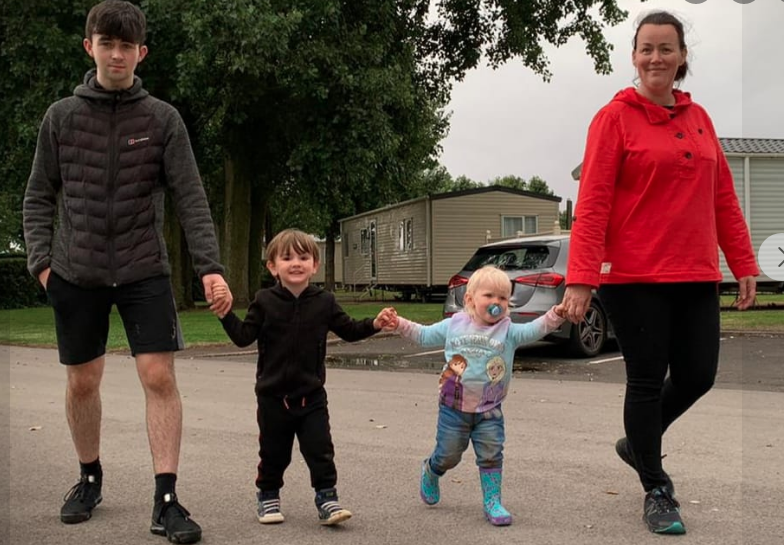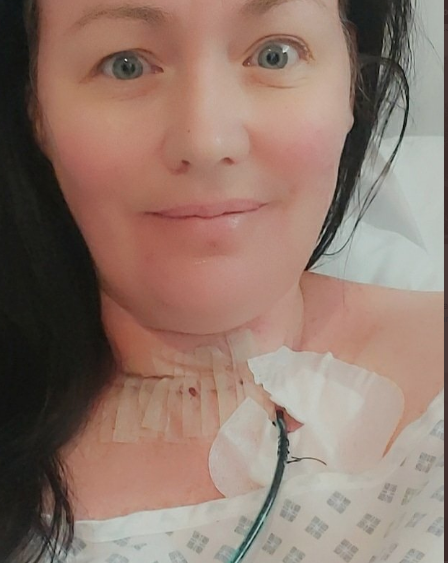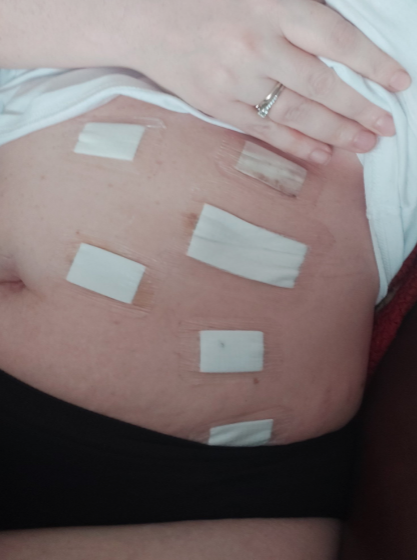The Effects of Long COVID Prove to Actually Be Cancer in One Woman
- Jemma Falloon, 41, contracted COVID in October 2020 and blamed long COVID for the sore throat she still had a month later.
- She sought medical attention after feeling a lump, and after multiple tests, she soon learned that she had both thyroid and kidney cancer.
- Medical experts tell SurvivorNet that the most common symptom of kidney cancer in women is blood in the urine.
Those are the words of Jemma Falloon, a mother-of-three and triathlete diagnosed with both thyroid and kidney cancer after she spent weeks blaming her sore throat on Long COVID.
Read More“It took me a while to recover not just the ten days I spent in isolation.”

Her symptoms eventually dissipated over time, but Falloon was still dealing with a sore throat, frequent back pain, and blood in her urine a month later.
Then, she discovered a lump in her neck.
“I was still not feeling great, but I thought maybe it was long Covid,” explains Falloon.
The lump concerned Falloon enough to call and schedule an appointment with her doctor, who tested her blood.
Falloon then went for an ultrasound, which “revealed a suspicious nodule” on her thyroid.
Next, a sample of the “nodule” was extracted through a fine needle biopsy, a procedure during which a needle pierces the throat and removes part of a mass to test it for cFalloon’sn FFalloon’scase, the test was positive.
At the same time, she informed her doctor about the backache and blood in her urine, prompting him to send her off for another ultrasound.
Given the issues with Falloon’s thyroid, her doctor suggested kidney stones could be the culprit.
An MRI and CT scan followed the ultrasound and detected a mass in one of the kidneys. On New Year’s Eve, Falloon received the results – she had kidney cancer.
“They told me it was suspected cancer and that they’d need to operate as soon as possible,” recalls Fallon.
Chemotherapy and radiotherapy were not among the treatment options for either cancer, so Falloon scheduled kidney surgery for February.

“Having my kidney out was tough. It was performed by a robot, so I’ve got six scars in my abdomen rather than one big scar,” says Falloon.
“Getting up hurt and walking hurt, and I struggled to go to the toilet, so I had to come home with a catheter in.”
The most challenging part for Falloon? “I expected recovery to be easier than it was.”
Related: Do Blood Tests to Find Cancer Early Work?
In May, Falloon had half her thyroid removed by doctors who discovered papillary thyroid cancer. As is protocol, Falloon then had the rest of her thyroid removed the following month.
Falloon is now at the start of a long cancer journey and will get tested every three months for the next ten years.
Doctors believe that the thyroid cancer did not metastasize and they will closely monitor Fallonn’s kidney for the next decade. Falloon is optimistic, noting that she had “slow-moving” cancer in her kidney and that doctors removed her thyroid.
There is also some concern about a mass on Falloon’s lung that doctors will be keeping an eye on for the next five years, unsure if it might be cancer or a result of COVID.

Falloon is considering genetic testing as well, both for her sake and the sake of her three children.
“I’m still really tired, as I’m trying to manage the thyroid tablets, and I still have a lot of back pain,” says Falloon.
“All things considered, though, I’m in great shape, but I’m not at the ‘no evidence of disease’ stage yet.”
Now, her focus is on returning to her fitness regime.
She made a big step towards achieving that by walking in a 13-mile race, benefitting the very nurses that got her through COVID, thyroid cancer, and kidney cancer.
“That was horrendous,” she says of the race.
“It was really tough, but mentally did me the world of good just being able to show myself that I could still get out there and do things.”
Most Common Symptom of Kidney Cancer in Women
Kidney cancer can often be difficult to detect, with many women doing the same as Jemma Falloon and assuming some other aliment is causing their symptoms.
Women suffering from kidney cancer and other cancers of the genitourinary system often display the same symptoms according to Dr. Jay Shah, Cancer Care Program Leader for Urologic Oncology at the Stanford Cancer Center – painless blood in the urine.
That symptom is often dismissed by women at first, explains Dr. Shah, and many wait weeks or even months before telling their doctor.
“Men are not used to seeing blood anywhere down in that area, in the genitourinary system. Whereas women, if they’ve been menstruating, they are used to that idea, and the delay can be longer,” explains Dr. Shah.
Cancer Survivor Came Back From Two-Week Coma, Kidney Failure To Beat Disease
To determine what is causing the bleeding, doctors have “several different tests” that “look at the entire urinary tract,” says Dr. Shah.
“The urinary tract starts up at the kidneys, and then there are tubes that bring urine down from the kidneys into the bladder, and then includes the bladder and the urethra, and we divide the kidney and the ureters into the upper urinary tract and the bladder and urethra into the lower urinary tract,” explains Dr. Shah.
“So the tests that we do for someone with blood in the urine include looking at the upper urinary tract with something like a CT scan or an ultrasound or something called an intravenous ‘pyelogram.'”
Those are all different versions of x-rays that can provide doctors with a closer look at what is happening inside the kidney and, hopefully, locate the cause and source of the bleeding. In Falloon’s case, doctors discovered the tumor in her kidney following an ultrasound and CT scan because it is part of the upper urinary tract.
If the tumor had been in the lower tract, doctors would have likely performed a cystoscopy procedure where doctors use a camera to look at the bladder, says Dr. Shah.
Young Ballerina Beats Kidney Cancer With Husband By Her Side
Learn more about SurvivorNet's rigorous medical review process.


